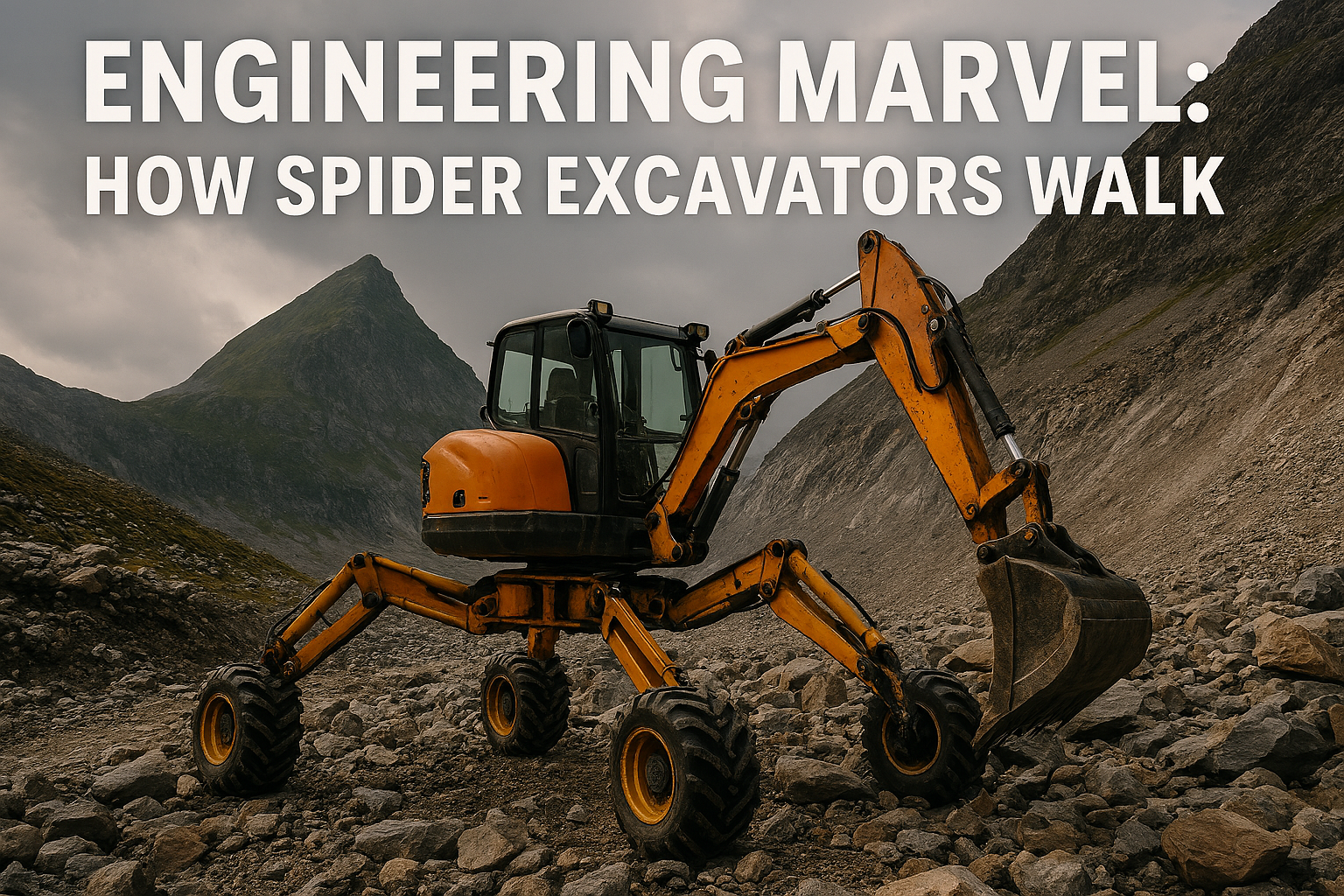Enthusiast Corner
Engineering Marvel: How Spider Excavators Walk
Spider excavators, also known as walking excavators, are a remarkable feat of engineering. Unlike traditional excavators with fixed tracks or wheels, these machines are designed to traverse extreme terrain where conventional equipment can’t go—steep slopes, rocky hillsides, and muddy embankments. But how do they manage this unique mobility? The answer lies in their extendable legs and adjustable chassis.
The Anatomy of a Spider Excavator
At first glance, spider excavators look almost alien, with four articulated legs ending in pads or wheels, depending on the model. Each leg is equipped with hydraulic cylinders that allow it to extend, retract, and rotate independently. This gives the machine an extraordinary range of motion, allowing it to "walk" over obstacles, stabilize itself on uneven ground, and even adjust its body angle to maintain balance.
The chassis, or main body of the excavator, is mounted on a pivot system that works in tandem with the legs. By adjusting the height and tilt of the chassis, operators can optimize the machine’s center of gravity, improving stability and safety on treacherous surfaces.
Walking Mechanics
Walking a spider excavator isn’t like driving a wheeled vehicle. Each leg is controlled individually, allowing precise placement and gradual movement. Operators can lift and move legs in sequence, almost like a carefully coordinated dance, to propel the machine forward, sideways, or even diagonally. The combination of hydraulics, pivoting joints, and an adjustable chassis allows the excavator to "step over" obstacles that would stop traditional machines in their tracks.
Additionally, the legs’ ability to adjust in height and angle allows the spider excavator to maintain a level platform for digging or lifting, even on extreme slopes. This makes them invaluable in forestry, mountain construction, riverbank stabilization, and rescue operations in challenging terrain.
Engineering Challenges
Designing a walking excavator is far more complex than a standard machine. The hydraulics must be incredibly precise and robust, as each leg supports a portion of the machine’s weight. The control system must ensure smooth coordination between the legs and chassis, preventing tipping or instability. Engineers also need to account for weight distribution, ground pressure, and durability, as these machines often operate in harsh, unpredictable environments.
Why They Matter
Spider excavators represent a perfect blend of innovation and practicality. By combining mobility, stability, and power, they allow operators to tackle projects that would otherwise require extensive site preparation or be deemed impossible. Their versatility and adaptability continue to push the boundaries of what heavy machinery can achieve.
In short, the walking ability of spider excavators is more than a gimmick—it’s a carefully engineered solution that opens up new possibilities in construction, forestry, and environmental management. The next time you see one “walking” up a steep embankment, take a moment to appreciate the engineering marvel that makes it possible.

